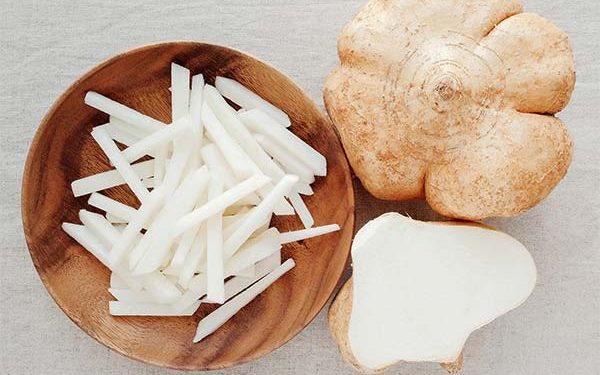#HikamaInsights #HealthyEating #ExoticVeggies
Unveil the secrets of hikama, the lesser-known vegetable that’s making waves for its incredible health benefits and culinary versatility.
Hikama, with its trailing vines belonging to the legume family, has been a staple in Mexican diets for centuries. The plant’s above-ground portion boasts white or yellow flowers that grace it for up to 10 months a year. Despite its visual appeal, the plant contains rotenone, rendering it inedible. However, its round root is the true culinary treasure, finding its way into numerous Mexican dishes. From fishing uses to its journey to the Old World, the hikama has woven an intriguing narrative.
Consequences of Development:
Delve into the nutritional aspects of hikama. With a low-calorie count of just 39 kcal per 100g, it’s a dieter’s dream due to its high water content. Its soluble fiber aids digestion, while vitamins A, B, E, and C boost immunity. Oligofructose and inulin, present in the vegetable, lower blood sugar levels and promote gut health. The vegetable’s unique properties help regulate blood pressure, enhance cardiovascular health, and fortify bones, hair, and nails.
Benefits vs. Risks:
While hikama offers numerous health benefits, excessive consumption can strain the urinary system. Swelling and issues related to kidney stones might arise. While allergies and intolerance are rare, caution is advised. Abstaining from consuming any parts beyond the edible root is essential, as the rest of the plant can be toxic.
Culinary Exploration:
From selecting the right hikama to preparing it, the culinary journey of this vegetable is as fascinating as its story. Its appearance, resembling a larger version of a potato or turnip, makes it stand out. Varieties with different skin colors – light yellow, pink-brown, or gray – exist, all requiring peeling before consumption. The edible portion, akin to raw potato in texture, varies in taste from apple-like to banana-like, offering a range of culinary possibilities.
Hikama might be a rarity on European shelves, but its potential in healthy eating is vast. From its unique taste to its nutritional benefits, it’s a remarkable addition to anyone’s diet. Just remember, while indulging in its culinary potential, always tread carefully and enjoy the many wonders this lesser-known vegetable has to offer.































